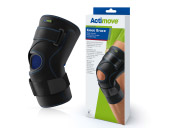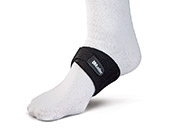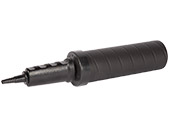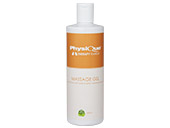6 Common Field Hockey Injuries
Our products are trusted by over 85 elite teams, including...
Top Hockey Injuries
Hockey, while less of a contact sport than Rugby, can still pose a risk of injury to athletes and hockey enthusiasts.
Steps have been taken to make the game safer in the form of rules and regulations, the FIH allows face gear within the 23m area and referees are less lenient on aerial balls for example.
The aim of these and similar rules is to safeguard hockey players and reduce the chance of them picking up an injury. Nevertheless, Hockey can still be quite dangerous, this is especially the case for professional-level hockey where the game is extremely fast-paced, a lot more demanding on the body and you are more likely to get hit with the ball.
Shin guards and face gear are extremely helpful for reducing injuries from the ball or a hockey stick, especially in short corners (penalty corners). For additional tips on addressing Hockey Injuries, please visit our Top 5 Tips for Hockey Injuries which was produced in collaboration with GB Hockey.


What Are Common Field Hockey Injuries?
As listed in the infographic, the common injuries are:
- Shin Splints
- Hamstring Strain
- Ankle Sprain
- Contusions
- Knee Injuries
- Lower Back Pain
Some other common injuries also include:
- AC Joint and Shoulder Injuries
- Concussions
- Hand and Wrist Injuries

What Is The Most Common Field Hockey Injury?
According to a study on injuries at FIH tournaments,[1] for women, the most common injuries were to the head and face. It was the same case for men except men also picked up an equal amount of lower limb injuries such as the knee and thighs.
The ball was responsible for most of the injuries but some players' injuries were caused by sticks and from falling over.
The same study also concluded that the incidence of acute injuries in hockey was quite low but this does not factor in training where a lot of overuse injuries are more likely to occur.
Lower limb injuries are very common for both overuse and acute injuries

How Do I Treat A Field Hockey Injury?
As is the case with any acute injury, we don't recommend that you attempt to treat your own injuries, we would always recommend that you should always seek the guidance of someone who is medically trained.
If you are medically trained then the POLICE Principle (Protection, Optimal Loading, Ice, Compression and Elevation) is a good guideline.
PEACE & LOVE (Protection, Elevation, Avoid anti-inflammatories, Compression, Education, Load, Optimism, Vascularisation and Exercise), can also be quite helpful for managing the injury until someone can take a proper look at it and assess your injury.
If you are a sports medicine professional then you might benefit from our Sports First Aid Kit approved by GB Hockey - for more information please visit our Sports First Aid Kits and the relevant Pitch Side First Aid Kit guide.
How Can I Prevent A Field Hockey Injury?
Wearing protective gear is one of the most important parts of reducing your chances of picking up an injury while playing hockey, face gear is of course the most important but shin guards, padded hand protectors, gum shields/mouthguards and the Goalkeeper's kit are equally instrumental in properly protecting yourself from the ball or hockey sticks.
You can't do too much in terms of eliminating overuse and acute injuries and you can only realistically mitigate the likelihood of acute and overuse injuries.
Stretching properly and warming up can help you prepare for training and matches better, Foam Rollers can help you stretch. Taping and Strapping is of course another means of making sure hockey players don't pick up any injuries that can be caused by unnatural twisting or bending of joints which in turn can help prevent acute ligament and muscle injuries as well as overuse injuries.
Strengthening and Conditioning may also help make you less injury-prone and this is usually overseen by a physio or sports therapist, they use tools like Resistance Bands and Performance testing tools to essentially optimise your body.
This video, made in collaboration with GB Hockey gives and example of how to strengthen or rehabilitate your ankles, for more please visit our Hockey Guides
Here's the information from the infographic in a bit more depth with the other common injuries not covered by the infographic:
Ankle Sprain - Ankle ligament tear or damage, one of the extremely common injuries in hockey, caused by ankle roll or similar damage. The POLICE Principle and physiotherapy can help
Contusions - These are caused by impact from the ball, a stick or from a fall, the result is damage to the muscle and the symptoms include swelling and bruising. It is very common due to the nature of the sport as discussed earlier but contusions are typically easily treatable
Knee Injuries - ACL injuries and Cartilage damage are very common, caused by twisting or a sudden stop. Symptoms include swelling, instability and severe pain. Please consult a medical professional for proper guidance as these can be very serious injuries that inhibit your ability to walk and can create long-term damage or re-injury if not properly addressed. An ACL knee support can help with stabilisation of the knee.
Shin Splints - The pain is concentrated in the front part of the lower legs, along the tibia (shin bone) and it is caused by repetitive stress from running. POLICE Principle is helpful, lots of rest can reduce recovery to a few weeks but if pain persists then a physical therapy programme can help relieve pain.
Hamstring Strain - These injuries involve damage to the tendon or muscle and are caused by short bursts of speed. The pain can be felt in the hamstrings which are along the backside of your thigh. A very bad strain can have a very long recovery time so re-injury and persisting discomfort are common
Lower Back Pain - A lot of time is spent in positions that aren't good for the spine and lower back. Hip injuries are fairly common for the same reason. These injuries are theoretically avoidable with better posture and strengthening but if you are a professional hockey player then you are bound to have either back or hip problems at some point but some can be very minor.
Other Common Injuries:
Shoulder injuries - Dislocated Shoulders are relatively common but this refers to overuse injuries more, AC Joint Injuries (which are acute injuries) are very common in Ice Hockey so there is a chance Field Hockey players can get these injuries as well although this is unlikely due to field hockey being a lot less dangerous when it comes to stick-to-stick contact.
Hand and Wrist Injuries - Hand Injuries are mainly from the ball and can include fractures from the impact. Wrist injuries in Field Hockey are usually from overuse of the wrist so the tendons, soft tissues and ligaments can be affected.
Sources and References
Orooj, Munazza & Nuhmani, Shibili & Muaidi, Qassim. (2016). Common injuries in field hockey. Saudi Journal of Sports Medicine. 16. 20. 10.4103/1319-6308.173477.
FIH - Field Hockey Rules































































Did you find this article useful?
Why not share this with a colleague, patient or friend?